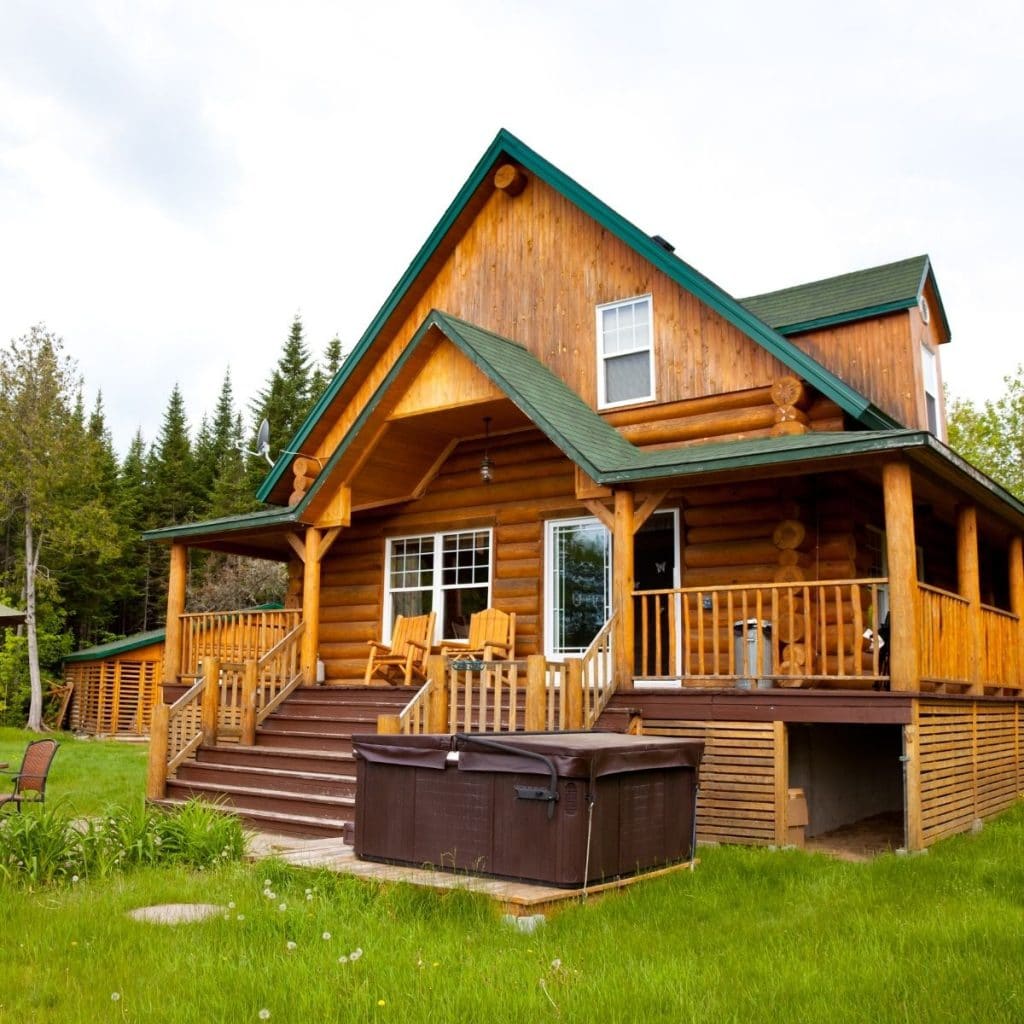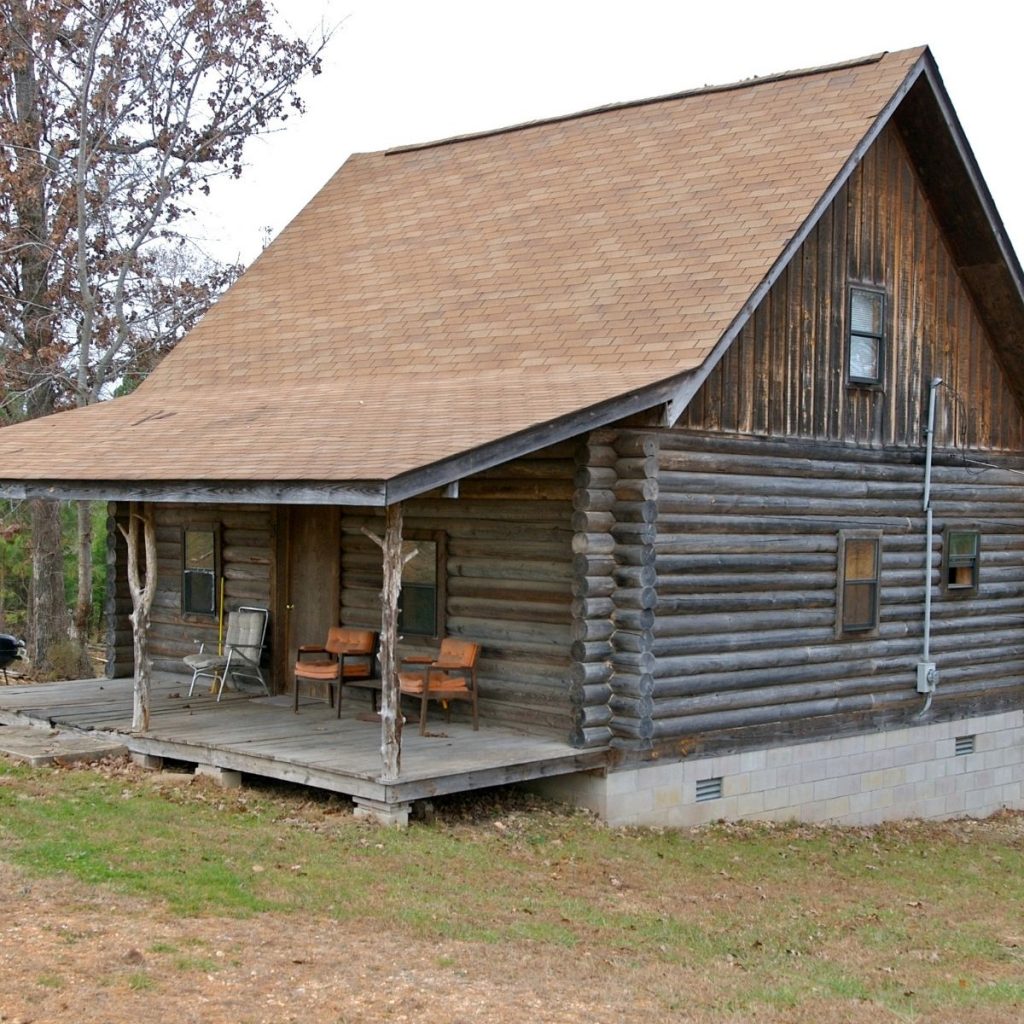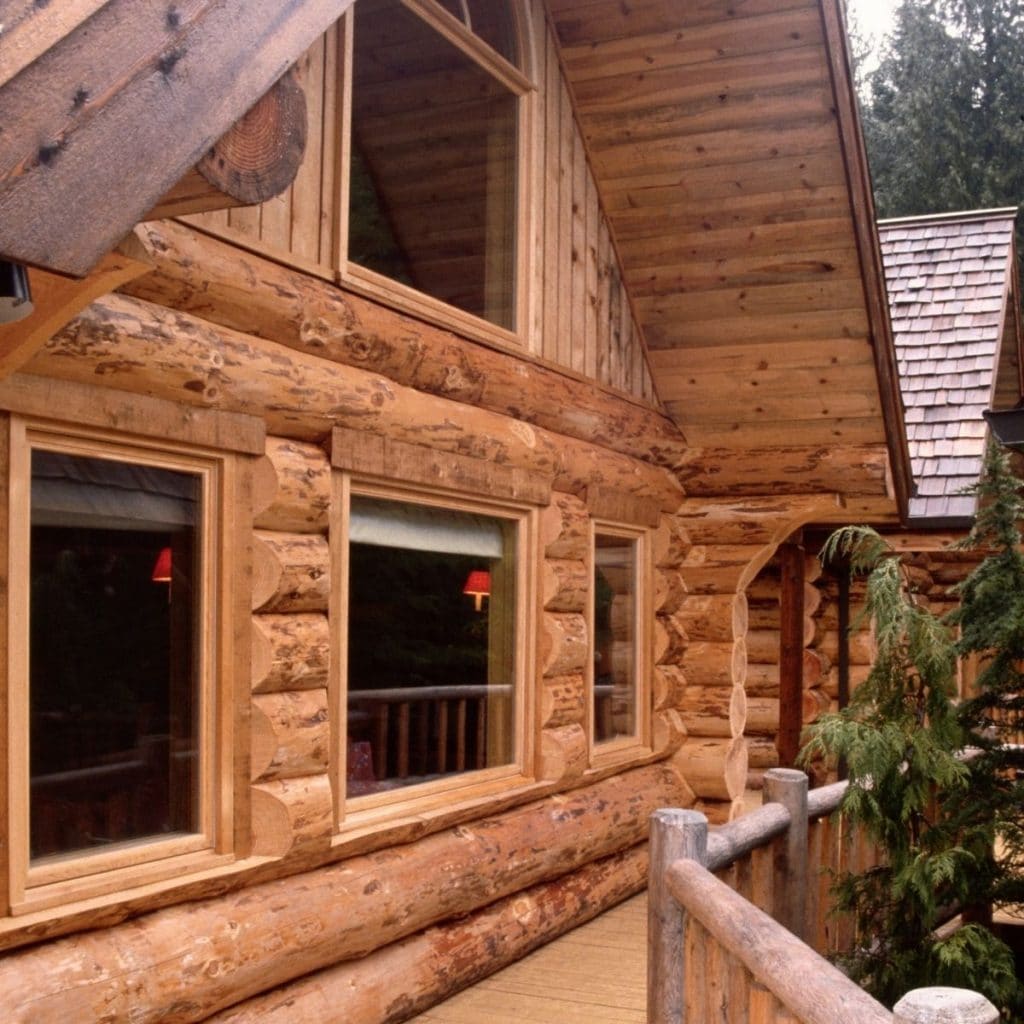Peace of Mind for New Buyers
A home inspection will inform you, as the potential buyer, of the current condition of the log cabin and assure you that it is ready to occupy.
Your log home is a major investment and whether you plan to live there forever or move on in a few years, you certainly don’t want any unexpected problems cropping up to surprise you down the road.
As a log cabin buyer you need to exercise extra due diligence and that’s why hiring a certified inspector makes sense. You can get a quick idea of the overall condition of the cabin on your own with our short inspection checklist or do a thorough job with our comprehensive checklist.

New log homes receive a certificate of occupancy from the local building inspectors, but while this ensures that building codes have been adhered to (at least for the most part – building inspectors are not infallible, nor do they have unlimited time to fully inspect every detail), building codes are the bare minimum standard.
In addition, there may be issues or shortcomings that can cause you problems but that are not necessarily code violations and so would not have been caught by the building inspectors but would be checked by a cabin inspection. Our page on cabin exterior inspection tips offers a closer look at critical areas to investigate.
Most new cabin construction will offer a warranty period for the new owners, but there may be items not covered by the warranty or there may be limitations on the warranty.
Jump to:
Home Inspectors and Building Inspectors
What’s the difference between a home inspector and a building inspector?
A home inspector is a private, certified individual who is hired by the potential buyer to watch out for the buyer’s interests while he conducts an independent home inspection.
A building inspector works for the local building code agency, usually city or county, and inspects the house during the construction process. Building inspectors ensure that the log home is built according to local building codes.
Typical inspections for a building inspector include:
- Footers and Foundation
- Sill Attachment and Foundation Waterproofing
- Framing
- Rough Electrical
- Rough HVAC
- Rough Plumbing
- Insulation
- Gas Piping
- Final Electrical, Plumbing and HVAC
- Issuance of Certificate of Occupancy
Home Inspections

What does an inspection involve?
A new cabin inspection is a visual, operational check of all the different components of a home. It is non-invasive, meaning that the inspector will not drill into walls, remove structures or damage the property in order to perform the home inspection.
Checklist
What is included on the typical cabin inspection checklist?
The following list details many of the systems that are included:
- Structural — foundations, bearing walls, floor systems, etc.
- Electrical Systems — wiring, switches, receptacles, service panel, etc.
- HVAC (Heating, Ventilation and Air Conditioning)— cooling, heating and air handling equipment, distribution systems and controls.
- Plumbing Systems — fixtures & faucets, piping, water heating system, etc.
- Insulation — attic and exterior insulation.
- Roofing — roof coverings and flashing.
- Interior — wall partitions, interior doors, windows, ceilings, floors, etc.
- Exterior — windows, doors, siding, decks, garages, drainage, etc.
A comprehensive report is provided following the visit, sometimes including recommendations for further evaluation by specialized inspectors, such as structural engineers, radon inspectors or mold mitigation specialists.
What are my options if the report turns up flaws? Generally, you have the following options to address any shortcomings:
- Opt out of the purchase
- Ask that the specified repairs be made to the cabin
- Ask for a credit towards the cost of doing those repairs yourself
- Ask for a reduction in the purchase price
Red Flags
What are the major problems that might raise a red flag?
The following issues are ones you want to address quickly or that might even lead you to back out of the deal.
- Water damage — Extensive water damage can lead to rotted wood and the growth of mold and mildew in your log cabin.
- Radon — Radon is an odorless gas that can cause cancer.
- Mold — Toxic mold can cause serious health issues and is becoming a bigger problem.
- Termites and Carpenter bees — Insects can attack your wood logs and cause serious damage over time.
- Foundation or structural problems — Foundation or structural problems can add up to big bucks for repairs on your log home.
- Undersized electrical system — Today’s log homes use more and more power to supply hot tubs, hair dryers, home offices and kitchen appliances. Upgrading cabin wiring can be expensive.
Choosing a Cabin Inspector

How do I choose?
The best way to choose an inspector is to get referrals from family and friends who have used one and to ask them who they’ve had a good experience with. You should also ensure that your cabin inspector has:
Licensing or Certification Requirements vary from state to state but check for their license number on their cards or website.
Membership in a Professional Organization There are several national home inspector organizations such as:
- The National Association of Certified Home Inspectors (InterNACHI)
- Independent Home Inspectors of North America (IHINA)
- American Society of Home Inspectors (ASHI)
- National Association of Home Inspectors, Inc. (NAHI)
No Conflict of Interest Don’t use an inspector who may stand to gain from the sale or cancellation of the sale of the log home. Be careful of who your inspector recommends for damage repairs. Use your professional home inspection to make your dream of log home living come true. If nothing else, your log cabin inspection will alert you to various maintenance issues for you to keep an eye on and areas to be improved.
This short inspection checklist will give you a quick idea of the cabin’s condition, while this comprehensive checklist covers the ground more thoroughly. A professional home inspection can reassure you that all systems have been checked over and that there are no major issues to be dealt with later on in your log home.
For a comprehensive look into this important subject, check out "The Complete Guide to Home Inspection" by Roger C. Robinson and Michael Litchfield.
More Cabin Inspection Pages:
- Build a Log Cabin To build a log cabin means coordinating many aspects and prompt decision-making.
- Building Inspectors Building inspectors ensure our safety by enforcing building codes.
- Cabin Exterior Inspection Tips These cabin exterior inspection tips show you what to watch for when you are considering buying a pre-owned log home or cabin.
- Detailed Log Cabin Inspection Checklist This detailed log cabin inspection checklist will give you a more thorough understanding of the systems and individual items that need inspection.
- Log Home Inspection Checklist


Leave a Reply